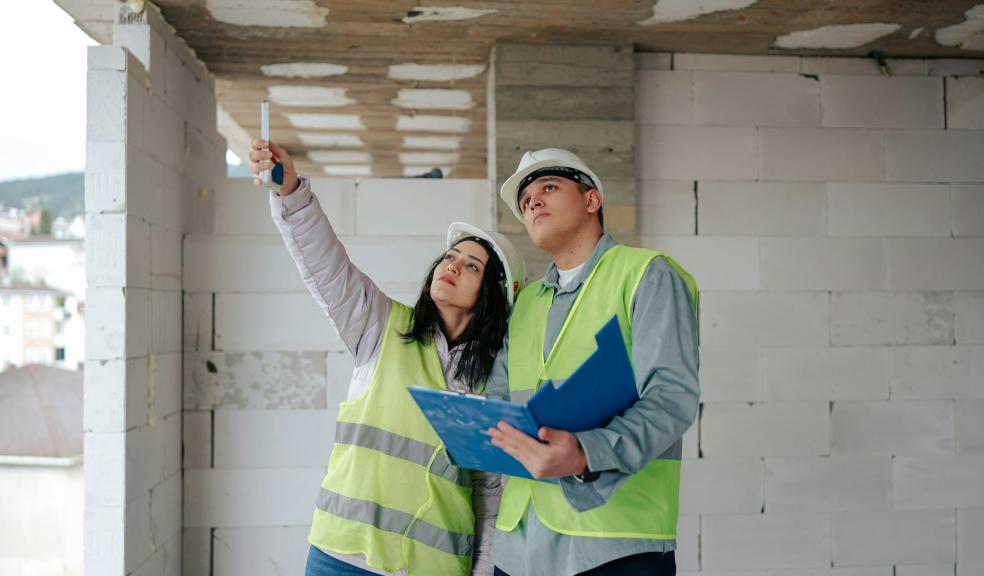
What Does a New-Build Survey Check?
Buying a new-build home often feels like a dream come true. Pristine interiors, modern fixtures, energy efficiency, and no need for immediate repairs are just a few of the many perks. However, just because a property is brand new doesn't mean it’s free from faults. This is where a new-build survey comes in.
So, what exactly does a new-build survey check, and why should you consider one before signing on the dotted line?
Understanding a New-Build Survey
A new-build survey, often referred to as a snagging survey, is a detailed inspection of a property that's either recently built or near completion. The primary aim is to identify defects, unfinished work, or anything that does not meet the agreed-upon standards set out in your contract or building regulations.
While it's easy to assume that a new home is perfect, the reality is that many new-builds have small, and sometimes significant, issues. These could range from cosmetic imperfections like paintwork blemishes to more serious concerns such as poor insulation, plumbing issues, or structural problems.
Key Areas a New-Build Survey Checks
Let’s break down what a professional surveyor will typically inspect:
1. External Structure
The survey will begin by checking the overall structure of the building. This includes:
● Brickwork and rendering
● Roofing (tiles, guttering, soffits, and fascias)
● Windows and doors (alignment, fittings, and seals)
● Drainage and pipework
● Boundary walls and fencing
The surveyor ensures everything is finished to a high standard and complies with building regulations.
2. Internal Finishes and Fixtures
This part of the inspection focuses on interior details, including:
● Walls, ceilings, and plastering
● Paint and finishes
● Flooring – whether carpeted, tiled or laminate
● Doors and handles
● Skirting boards and architraves
Minor issues such as uneven surfaces, poor finishing or incorrect fittings are noted here, as they affect the quality and finish of the property.
3. Plumbing and Heating
Surveyors will test water pressure, drainage, and inspect visible plumbing. This includes:
● Taps, sinks, toilets, baths, and showers
● Central heating systems and radiators
● Pipe insulation
● Hot water temperature and functionality
These checks ensure the plumbing is installed correctly and works efficiently from day one.
4. Electrical Installations
All electrical components must be thoroughly inspected for safety and compliance. This includes:
● Light switches and power sockets
● Smoke and carbon monoxide detectors
● Circuit boards and fuse boxes
● Heating thermostats
● Any integrated appliances
A faulty electrical system not only creates inconvenience but can also pose safety risks, so this part of the survey is crucial.
5. Ventilation and Insulation
Modern homes are built to be energy-efficient, but corners can sometimes be cut. The survey will assess:
● Loft and wall insulation
● Window seals
● Extractor fans in kitchens and bathrooms
● General air flow throughout the home
Good ventilation and insulation are essential for comfort, energy bills, and overall air quality.
6. Garage, Driveway and Outdoor Spaces
If your new-build includes external elements like a garage or garden, these will also be checked. Surveyors will look at:
● Driveway paving
● Garage doors and lighting
● Fencing and gates
● Turfing or landscaping
Again, the aim is to confirm that the work has been completed according to the developer’s plans and your expectations.
Why You Need a Survey Even for a New-Build
You might wonder: if it's brand new, why bother with a survey? The answer is simple — new-builds can, and often do, come with snags. Some issues may be invisible to the untrained eye but could cost you significantly later on if left unaddressed.
Moreover, developers often work to tight deadlines, which can lead to rushed finishes or overlooked details. Having a professional snagging survey done means you can catch these problems early and ensure they’re rectified before your warranty period expires.
When Should You Book a New-Build Survey?
Ideally, you should have the survey done before you complete the purchase — that way, you can raise issues with the developer beforehand. However, it can also be carried out shortly after moving in, as most developers offer a period (often 2 years) where they're responsible for correcting faults under warranty.
Trust the Experts: Whitegates Wolverhampton Estate Agents
If you’re considering buying a new-build home, it’s vital to have the right professionals by your side. That’s where Whitegates Wolverhampton estate agents come in. With their local knowledge, decades of industry experience, and connections to trusted surveyors, they can guide you through the entire process — from property search to post-sale snagging checks.
Whitegates Wolverhampton estate agents don’t just help you find a new home — they make sure it’s up to scratch, too.
Final Thoughts
A new-build survey might seem like an extra step, but it’s a crucial part of buying a home. It gives you peace of mind, ensures value for money, and puts pressure on developers to deliver what they’ve promised. Don’t assume that “new” means “perfect.” Whether it’s a tiny paint smudge or a major plumbing fault, a snagging survey catches it all.
Before you pop the champagne and collect your keys, let a surveyor take a closer look — your future self will thank you.









